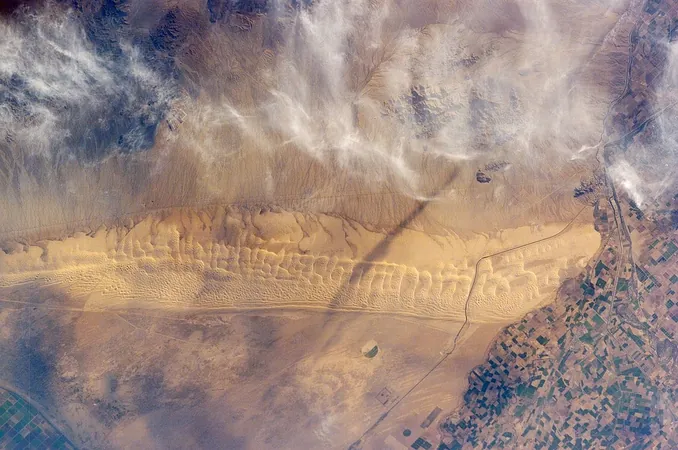
Unlocking Mars: How California's Dunes Are Shaping Our Understanding of the Red Planet
2025-07-12
Author: Ming
In a groundbreaking journey, graduate student Lauren Berger embarked on a mission to decode the mysteries of Mars by studying the Algodones Dunes in California. Loaded with GPS equipment, a drone, and her trusty "scoopula," she’s on a quest spanning 223 million kilometers to connect the dots between Earth and the Red Planet.
As part of her innovative research at Texas A&M University, Berger is forging the first-ever database of compound dunes found on Mars. This work is crucial for future human exploration, as it lays the foundation for understanding the terrain astronauts might face.
The Algodones Dunes serve as a unique natural laboratory, showcasing geological formations shaped by the relentless forces of wind. These features—sand ripples, dunes—aren’t just earthly phenomena; they are mirrored across our Solar System, found on planets and moons as diverse as Venus, Pluto, and Titan.
Berger utilizes cutting-edge drone technology to capture high-resolution aerial images of the dunes, which she carefully stitches together to create comprehensive maps for analysis. By comparing these Earth-based patterns with Martian imagery from NASA's Mars Reconnaissance Orbiter, she can draw parallels and delineate differences between the two worlds.
This comparative study investigates critical attributes of both earthly and Martian dunes, such as height, shape, and spacing. Armed with insights from Earth’s weather patterns and sand dynamics, Berger seeks to unravel clues about Martian atmospheric conditions and surface materials.
Berger's fascination with Martian sand ignited during her tenure at NASA's Jet Propulsion Laboratory, where she was tasked with mapping sand ripples for the Perseverance rover. This initial focus on hazard assessment transcended into a deeper understanding of the environmental history encoded in the patterns of Martian sand.
Her research underscores significant disparities between Earth and Mars. Martian dune fields, often smaller and scattered, primarily reside in polar regions, indicating limited sand reserves compared to Earth's expansive deserts. Yet, the similarities between the two planets provide a valid basis for her studies.
Particularly, Berger investigates compound dunes—smaller dunes atop larger ones—allowing her to analyze sand grain properties, wind dynamics, and atmospheric conditions. Each dune formation acts as a geological diary, preserving the climatic history of its origin.
Understanding the behavior of Martian dunes isn’t merely an academic endeavor; it’s vital. Mars is prone to planet-wide dust storms, and comprehending the surface dynamics will be crucial for selecting safe base locations for future human settlements.
Berger’s pioneering work is creating a scientific bridge between two barren worlds. Her research reveals that the answers to some of humanity's most pressing questions about exploration and survival on Mars might lie right in our own deserts, demonstrating the invaluable insights Earth can offer in our quest to explore the cosmos.


 Brasil (PT)
Brasil (PT)
 Canada (EN)
Canada (EN)
 Chile (ES)
Chile (ES)
 Česko (CS)
Česko (CS)
 대한민국 (KO)
대한민국 (KO)
 España (ES)
España (ES)
 France (FR)
France (FR)
 Hong Kong (EN)
Hong Kong (EN)
 Italia (IT)
Italia (IT)
 日本 (JA)
日本 (JA)
 Magyarország (HU)
Magyarország (HU)
 Norge (NO)
Norge (NO)
 Polska (PL)
Polska (PL)
 Schweiz (DE)
Schweiz (DE)
 Singapore (EN)
Singapore (EN)
 Sverige (SV)
Sverige (SV)
 Suomi (FI)
Suomi (FI)
 Türkiye (TR)
Türkiye (TR)
 الإمارات العربية المتحدة (AR)
الإمارات العربية المتحدة (AR)